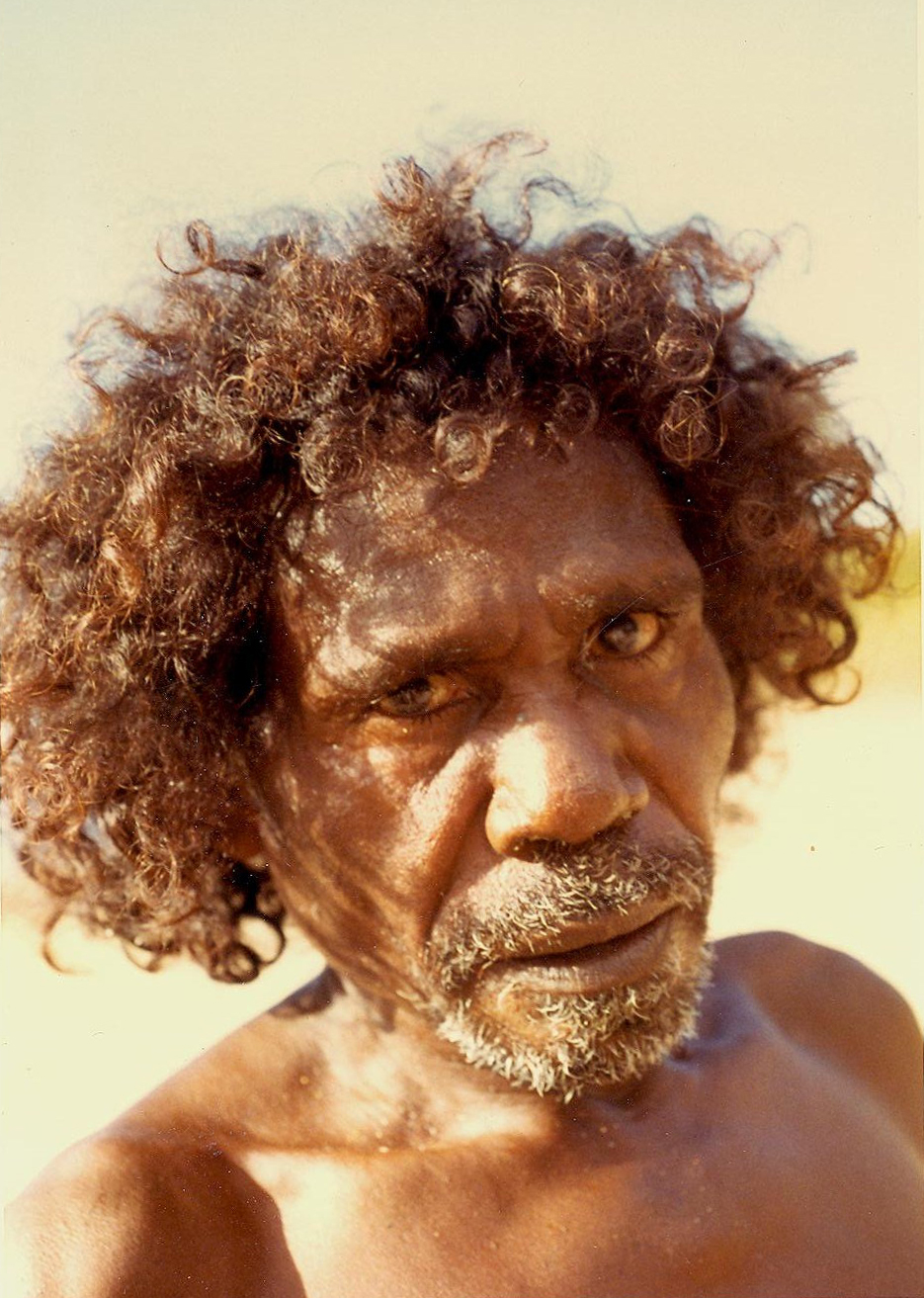
"There was standing in the shade a very special shelter known as Baṉakaka. The great Serpent Wittitj and her children sang the traditional songs, dancing and singing in the doorway, celebrating their beloved homeland and their Country, fulfilling their duty.
Suddenly, a pigeon landed and called, “Buk, buk, buk, buk, buk.” The bird landed onto the Baṉakaka. The great Serpent Wititj was asleep, and the pigeon landed on top of
the Serpent’s head and started talking. The pigeon was gently calling the west wind, saying, “Buk, buk, buk,” calling toward the west wind to fall on the Serpent.
A nice, cool wind blew from the bottom of the earth, from the edge of the horizon; the wind came dancing, coming in from the west. The west wind blew sweetly again, and it blew against the Nakutjpi wind, the Winirri wind, the Dhararrarra wind, and the Gurruwurru wind. Quietly signaling to each of them was the pigeon. Gently, the Bärra west wind came blowing, and the wind also went through to Natjitjpa and
caressed Nhumunba, Gaḏiḏi and Barraratjpi. Gayarrpar, the west wind, then spread along to many Dhuwa moiety places
all over the top end of Arnhem Land, every Dhuwa place that today shares the culture, the songs of all those places that
are mentioned—as, I, Jason Guwaṉbal, am speaking of—mentioning
the people of all clans and tribes from the Dhuwa
moiety: Dhupuḻa, Dharmitjpi, Dhalarrambarr, Yilkuy-Ŋumi,
Guruwana, Garrawanaŋu, Ḻiḻipiyana, Maḻimaḻi, Dururrŋa,
Yapayapa, Manybunurru, Gätata.
And the wind also went to
Garuma, it blew at that place the west wind, the Bärra wind,
Gumumuk, Yarrwiyarrwi, over at Djipala and Djirparri, the
wind spread to those places because of a little pigeon calling
for it to come while sitting on top of the Serpent. A little
pigeon called the west wind to blow."
– GUWAṈBAL GURRUWIWI
Additional Information
Decade
c.1966
Medium
Natural pigments on eucalyptus bark
Dimensions (IN)
47 3/4 x 19 7/8
Dimensions (CM)
121.29 x 50.48
Credit
Kluge-Ruhe Aboriginal Art Collection of the University of Virginia.
Edward L. Ruhe Collection. Gift of John W. Kluge, 1997. 1993.0004.058
Narrative
Gälpu
The Gälpu clan belongs to the Dhuwa moiety. Major spiritual themes include Wititj and Bol’ŋu....
Location
1960s
The 1960s were a decade of tumult and triumph for Yolŋu art and artists. In...
About The Artist(s)

Clan
Gälpu
Artist Dates
c.1929-1976
Alternative Names
Midinari, Midhinarri, Mitinari
Collections Represented
Art Gallery of New South Wales
Art Gallery of Western Australia
Field Museum of Natural History, Chicago
Grey Art Gallery, New York University
Kluge-Ruhe Aboriginal Art Collection of the University of Virginia
Museum of Anthropology, University of British Columbia
Museum and Art Gallery of the Northern Territory
Museum of Contemporary Art, Australia
National Gallery of Victoria
Newcastle Art Gallery
Tasmanian Museum and Art Gallery
